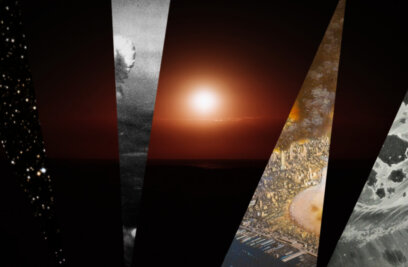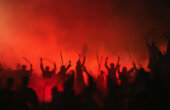A Century of Science Fiction That Changed How We Think About the Environment
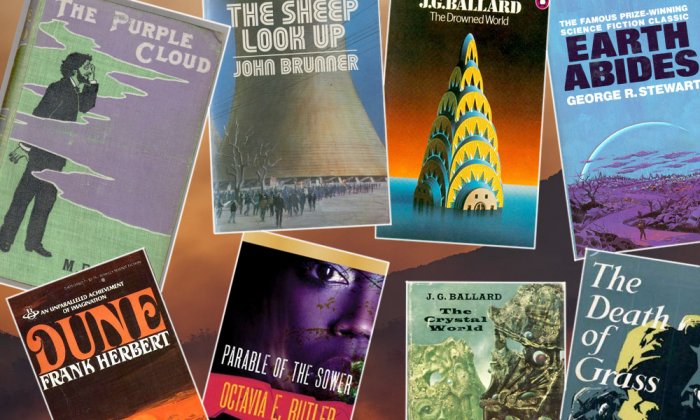
It has become axiomatic to say that the world is becoming like science fiction. From mobile phones that speak to us (reminding Star Trek fans of tricorders), to genetically modified foods, to the Internet of Things and the promise of self-driving cars, people in industrialized nations live immersed in technology. Daily life can thus at times seem like visions from the pulp science fiction of the 1920s and 1930s — either a world perfected by technology, manifested in events such as the 1939 World’s Fair, with its theme “The World of Tomorrow”; or a dystopian nightmare, such as Aldous Huxley’s “Brave New World” (1932).
If we think about science fiction (sf) in terms of the genre’s connections to pressing issues in 21st-century culture, no topic is more urgent than climate change and the ways it promises to transform all aspects of human life, from where we live to how we cultivate our food to what energy sources will fuel our industries.
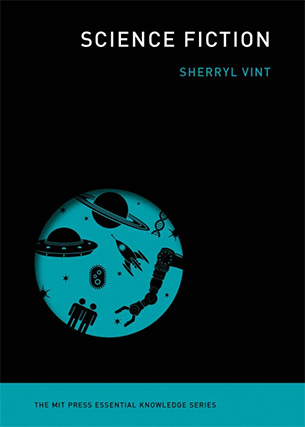
The issue is so pressing that some have started to use the term “cli-fi” for climate fiction — but this faddish coinage obscures a longer history of sf’s engagement with the environment and leaves unexamined the question of why sf has proven such a valuable genre for thinking about environmental futures. Even before the idea of climate change took hold, the genre embraced the geological and evolutionary timescales of 19th-century science and began to think of the planet as something that preceded our species and could conceivably continue without us. Such conceptualizations of the planet as a changeable environment turned the tradition of apocalyptic fiction toward mundane visions of environmental catastrophe instead of divine judgment.
A key early way such ideas circulated was through the changing imaginary about Mars: In the late 19th century, telescopic observations seemed to suggest the planet was covered in canals, which American astronomer Percival Lowell hypothesized were an irrigation technology, an idea taken up in Edgar Rice Burroughs’s “A Princess of Mars” (1912), among other fictions. When this idea was disproven by better telescopes, sf often depicted Mars as a once-inhabited planet whose civilizations had died out due to drought, presaging a fate that might also befall Earth.
In Kim Stanley Robinson’s “Mars” trilogy (1993–1996), about terraforming Mars to create an atmosphere and enable human colonization, technology is used to make these canals a material reality. The trilogy represents the viewpoints of several different factions over the decades-long process of changing the surface of Mars, including characters who argue in defense of leaving its environment unchanged. This is the best-known science fiction series about engineering planetary environments, most of which express themes about environmental protection and sustainability, but some of which celebrate a fantasy of total human control over the environment and planetary weather.
Early sf offered spectacles of disastrous destruction of cities and their populations but — unlike more recent works — did not posit anthropogenic causes. Disease rather than climate was more frequently imagined as humanity’s end in these works, including Mary Shelley’s “The Last Man” (1826) and M. P. Shiel’s “The Purple Cloud” (1901). At times such tales of massive destruction serve as opportunities to remake society without much environmentalism, such as Sydney Fowler Wright’s “Deluge” (1928), in which existing cultures are wiped out by earthquake-induced floods, distilling remaining populations into a hardier strain. This motif begins to take on a more environmentalist orientation in later works such as John Christopher’s “The Death of Grass” (1956), about a mutation that kills all cereal crops, a device that draws attention to humanity’s dependence on other species, a theme also present in George R. Stewart’s “Earth Abides” (1949), in which current humanity cannot survive, but the planet can.
Such works are interested in how the remnants of humanity might restore civilization and what form it might take, and thus remain anthropocentric in their focus. They are notable, however, for their emphasis on connections between humans and the natural world, resisting a technophilic tone of much contemporary sf that envisioned extensively mechanized futures. Moreover, they stand out from other contemporary postapocalyptic fiction in positing a premise other than nuclear war for the end of life as we know it and in explicitly linking images of destruction to environmental themes.
Ballard’s vivid depictions of the monstrosities inherent in industrialization, capitalism, and colonialism evoke topics that would usually be addressed in work by activist authors.
With the more experimental sf of the New Wave period and its relationships to contemporary countercultures, an overtly environmentalist sf appears, although here too fictions of apocalyptic collapses are sometimes more metaphorical than literal. This is especially true of J. G. Ballard’s stylistically compelling disaster novels, “The Wind from Nowhere” (1961), “The Drowned World” (1962), “The Burning World” (1964), and “The Crystal World” (1966), each of which depicts the world destroyed by what we would now call climate change — high winds, flood, drought, and a mysterious force that crystallizes matter, respectively. Ballard uses his transformed setting to interrogate the sterility and violence of the world prior to these disasters rather than comment specifically on environmental themes; nonetheless, his vivid depictions of the monstrosities inherent in industrialization, capitalism, and colonialism evoke topics that would usually be addressed in work by activist authors.
At roughly the same time, Rachel Carson published “Silent Spring” (1962), a trenchant critique of the use of pesticides in agriculture, which opens with “A Fable for Tomorrow” in which Carson depicts a future where a blight destroys all life in Anytown, USA, an outcome that Carson traces back to disruptions in the ecosystem caused by pesticides.
Carson thus demonstrates the rhetorical power of fictional, futuristic depictions to shape public understandings. In attempts to discredit her scientific credentials and disparage her personal character, Carson’s opponents were as vociferous and vile as any Ballardian antagonist. Nonetheless, her work, alongside the Club of Rome report “The Limits to Growth” (1972) published a decade later, fostered new ways of thinking about ecological futures, premised on sustainability.
“Silent Spring” energized a contemporary environmental movement, which had significant overlaps with contemporary antiwar and antinuclear activism. The first Earth Day was proposed in 1970, aimed at making air and water pollution a mainstream public concern, and eventually resulting in the creation of the U.S. Environmental Protection Agency and the passage of legislation related to pollution and endangered species.
Earth Day drew on the sf imaginary both in terms of Carson’s use of futuristic narrative and in the image of the planet as seen from space as a symbol on a flag designed by John McConnell, which was intended to convey the interconnectedness of all life on the planet. The turn toward imagination as a powerful rhetorical technique in the environmental movement is also apparent in the launch of the Whole Earth Catalog, a countercultural magazine started in 1968 and published until 1998, which also featured an image of Earth from space on its first cover — indeed, this is the “whole Earth” of its title. An early example of DIY activism, the magazine fostered an imaginative community oriented toward an ideal of living more sustainably, addressed, in this way, to inhabitants of that future.
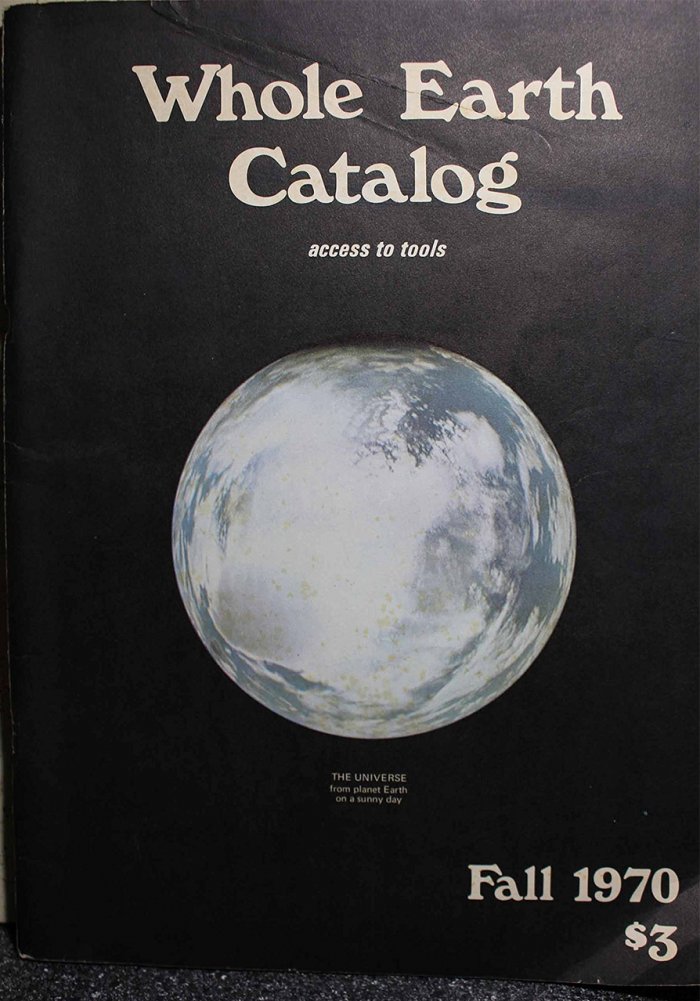
As with feminism in the 1960s and 1970s, environmental activists turned explicitly to sf and its relationship to the utopian tradition to promote countercultural values. The most famous example is Ernest Callenbach’s “Ecotopia” (1975), written as if it were the notebook of William Weston, a journalist who in 1999 is visiting and reporting on a society in the Pacific Northwest that seceded from America to establish a new polis defined by sustainability, recycling, minimal use of fossil fuels, localized food production, and gender equality. Like the authors of 19th-century utopias, Callenbach demonstrates an imaginative possibility for how one might live otherwise. Moreover, the novel suggests that changed relationships to environmental ideals require transformation of other aspects of social life, such as patriarchy and capitalism, themes that persist in ecological sf today. Similar ideas about the need to address problems of poverty and discrimination alongside pollution and environmental destruction are found in fiction by Kim Stanley Robinson, unquestionably the most important living sf writer addressing environmental themes.
There are then dystopian works of environmental sf such as John Brunner’s “The Sheep Look Up” (1972). Taking its title from a line in Milton’s “Lycidas” about hungry sheep failing to be fed by a corrupt church, the novel scathingly critiques the entrenched capitalist system that simultaneously destroys the environment and markets products designed to ameliorate the risks caused by contaminated air, water, and food. The plot concerns Nutripon, a manufactured food sent to developing countries as part of an American aid package. A shipment causes hallucinations that result in violent behavior, and some believe this is a deliberate attempt to eliminate people of color. Meanwhile, in the United States, money is less and less able to insulate the rich from contaminated food and water. Finally, we learn the Nutripon shipment was contaminated by toxic waste in the factory’s water supply, an accident. In a world of irresponsible polluters who value profit above all else, a conspiracy is not required to produce genocide. Brunner’s work stands out for its global scope and its recognition that the damage done by colonialism continues in and is exacerbated by pollution.
Frank Herbert’s Dune (1965) is often understood as a prescient novel about climate change, given its desert setting and its invention of several technologies for survival with a minimum of water. It is the first novel is what would become a sprawling franchise. The original novel recounts the political machinations by which young Paul Atreides is displaced from his inheritance as a feudal colonizer of Arrakis, lives among nomadic Indigenous peoples while mastering psionic powers, and eventually reclaims his dynasty while also fulfilling a messianic prophecy. Alongside Robert Heinlein’s “Stranger in a Strange Land” (1961), in which a libertarian, free love–promoting human comes to Earth from Mars, “Dune” was read widely outside sf circles when it was published. Heinlein’s strange protagonist, Valentine Michael Smith, preached a hippie-like philosophy best expressed by the novel’s invented term “grok,” that is, comprehension so intense as to approximate union with the object of attention, a phrase soon widely used beyond sf. Both novels were embraced by a youthful college audience who saw in them a reflection of their own anti-establishment values.
But the shift from pollution to climate change as the main engine of dystopian futures doesn’t firmly take hold until the 21st century. The explicit turn to sf as a tool for environmental activism characterizes this second generation of writers, who often write fiction about climate change and are involved in activism.
Wanuri Kahiu’s important short film “Pumzi” (2009), depicting the regeneration of a future Africa after a period of intense environmental loss, shows the power of new voices taking up these themes. Another prominent example is Paolo Bacigalupi, who addresses the uneven global effects of climate change. His YA trilogy — “Ship Breaker” (2010), “The Drowned Cities” (2012), and “Tool of War” (2017) — is set in a world changed by sea-level rise and projects both growing economic precarity and the rise of authoritarian governments in such circumstances. Bacigalupi’s most forceful novel to date is “The Water Knife” (2015), based on a short story originally published in the environmental magazine High Country News, about near-future water wars as California, Arizona, and Nevada all battle to control the dwindling resources of the Colorado Basin. It is mainly an indictment of legal manipulations that keep water rights in the hands of an elite, portraying with sympathy the fraught ethical choices left to the disenfranchised, and it concludes with a glimmer of hope in green technologies distributed by a Chinese government that is mostly in the background of the narrative.
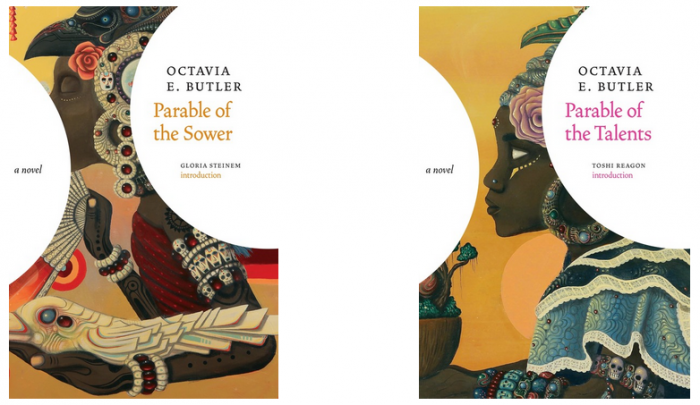
Octavia Butler’s “Parable” series (1993–1998) is a truly prescient work about climate change. One of the few writers of color to achieve prominence in the field during the 20th century, her reputation has only grown in the years since her death in 2006. In this series, she imagines a future California beset by massive displacements fueled by climate change. Although published more than 20 years ago, these books read as plausible futures, perhaps now more than ever. Unlike Bacigalupi’s despair, Butler’s novel is rooted in hope, although she depicts an equally grim future. Like her “Xenogenesis” series, this work demands of its audience that we confront the difficult task of building communities in the face of loss, displacement, and tensions about diversity.
The Parable series imagines a future religion, Earthseed, as the core of this new kind of community. As Shelley Streeby outlines in “Imagining the Future of Climate Change” (2018), Butler’s work has inspired activists, some of whom have formed the Octavia E. Butler Legacy Network to cultivate the values Butler espoused, treating her sf as a manual for alternative lifeways — what Streeby calls a place “to practice the future.” Streeby connects this network to other instances of imaginative activism in 21st-century environmental politics, particularly by people of color and Indigenous communities, showing powerful ways that sf is becoming a rhetoric for activist practice. Butler’s vision insists that environmentalism must proceed in tandem with other social justice movements that counter racism and colonialism, a perspective that also informs N. K. Jemisin’s celebrated “Broken Earth trilogy,” the most important recent work to address climate change and social injustice as mutually constitutive problems.
Kim Stanley Robinson has written about the environmental damage caused by capitalism throughout his career, generally offering the hope that technology can ameliorate our dire situation. Climate change is most centrally the focus in his near-future “Science in the Capital” trilogy (2004–2007), about the struggle to mobilize politics and science together to confront the inevitability of climate change. The first novel, “Forty Signs of Rain” (2004), focuses on structural barriers that bar research and legislation that could address climate change, and it ends with the spectacle of a flooded Washington, DC. The second novel, “Fifty Degrees Below” (2005), is set during a mini Ice Age caused by the halting of the Gulf Stream, and it explores possible technical options to ameliorate this changed climate: a lichen engineered to capture more carbon, re-salinating the ocean to restart the Gulf Stream, and various tools and clothing that enable a high-tech Paleolithic lifestyle with a smaller carbon footprint than the lifeways of urbanized modernity. The final novel, “Sixty Days and Counting” (2007), offers the utopian possibility of an elected U.S. president who will prioritize climate change and who institutes a set of policies that push the U.S. economy into sustainable energy, while acknowledge the global disparities that are the legacy of capitalism. A number of the technological amelioration projects succeed, and we are left on the cusp of a new chapter in history.
Kim Stanley Robinson’s cast of characters enables readers to see how politicians, lobbyists, funding agencies, displaced migrants, and families in America are all part of the network that informs how climate change is perceived.
Appearing about the time that Hurricane Katrina devastated New Orleans in 2005, we can see in retrospect that the trilogy addresses issues of extreme weather, just as we can see now that Katrina was only the first of what has since become the new normal for the climate: heat waves, cold waves, and extreme storms. The vast scope of his work speaks to Robinson’s careful attention to the complexity of climate change and the institutional barriers that prevent even acknowledging this reality in some circles. His wide cast of characters enables readers to see how politicians, lobbyists, funding agencies, displaced migrants, and families in America are all part of the network that informs how climate change is perceived. The utopianism of Robinson’s conclusion seems a bit forced, perhaps, but he is careful to show the number of people and institutions that must come together to enact meaningful social change as he refuses to simply capitulate to the cynical despair that fuels Bacigalupi’s work. Although perhaps not self-evidently a climate change novel, Robinson’s “Shaman” (2013), set during the last ice age and recounting how early humans adapted to a changing climate, further reinforces his ideas about the value of elements of Paleolithic ways of living with, rather than in opposition to, one’s environment.
Science fiction is a genre that has long used its projected other worlds to offer commentary on our material (and contemporary) one, especially to remind us that this world is open to change. There is myriad evidence that authors from outside the genre use sf techniques in precisely this rhetorical way. Consider Naomi Oreskes and Erik M. Conway’s polemical “The Collapse of Western Civilization: A View from the Future” (2014), written as if by a Chinese historian in 2393 who is reflecting back to theorize why Western civilizations failed to act, despite clear signs of their looming collapse. Similarly, popular books such as Alan Weisman’s “The World without Us” (2007) and the documentary television series “Life after People” (2009) encourage us to reflect on how humans have changed our environments as they offer speculative visions of ecosystems continuing without us, erasing the technological signs of human habitation. Or consider Werner Herzog’s strange environmental film, “The Wild Blue Yonder” (2005), which is part documentary, part sf narrative, fused with NASA footage of outer space, deep sea photography, and a scripted narrative about an alien species who destroyed their ecosystem and seek to relocate to Earth.
Environmental rhetoric, like speculative design, an approach that encourages thinking about and designing possible futures in a meaningful way, is one of the main places we see sf become a discursive way to grasp the present. Lindsay Thomas, in a compelling article on preparedness discourse, argues that sf provides a counterdiscourse to the kinds of speculative projections found in disaster planning, including government projections about climate change. Whereas documents such as the Department of Defense 2014 Climate Change Adaptation Roadmap, cited by Thomas, cultivate feelings of neutral detachment and automated response to already anticipated scenarios, sf about climate change enables readers to experience multiple temporalities beyond the individual human life.
Preparedness discourse responds to change, understood as disaster, through strategies of containment. But science fiction offers something much more. It offers us a way of thinking and perceiving, a toolbox of methods for conceptualizing, intervening in, and living through rapid and widespread change — and the possibility to direct it toward an open future that we (re)make.
Sherryl Vint is Professor of Media and Cultural Studies and of English at the University of California, Riverside. She is the author of several books, most recently “Science Fiction,” from which this article is adapted.
